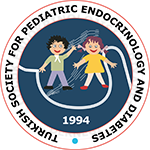Abstract
Biallelic FKBP10 variants cause autosomal recessive osteogenesis imperfecta(OI) type XI (OI-XI) and Bruck syndrome type 1 (BS-1), both characterized by bone fragility. However, BS-1 is additionally marked by joint contractures, leading to diagnostic overlap with OI-XI. To present two FKBP10-related cases illustrating the phenotypic continuum and diagnostic challenges between BS-1 and OI-XI. Case 1, a 3.5-month-old male, had multiple fractures, progressive joint contractures, and scoliosis. Genetic testing revealed a novel homozygous FKBP10 variant, c.603T>A (p.Tyr201Ter), confirming BS-1. Case 2, a 13-day-old male, presented with recurrent fractures but no contractures or pterygium. A pathogenic homozygous FKBP10 variant, c.890_897dupTGATGGAC (p.Gly300Ter), confirmed OI-XI. Despite bisphosphonate therapy, the BS-1 case continued to experience fractures, whereas the OI-XI patient remained fracture-free with improved bone mineral density. These cases demonstrate that FKBP10-related disorders represent a phenotypic continuum rather than distinct entities. Long-term follow-up is crucial, as BS-1 features such as contractures and scoliosis may become more evident or progressive over time. Recognition of evolving phenotypes is essential for accurate diagnosis and management.



